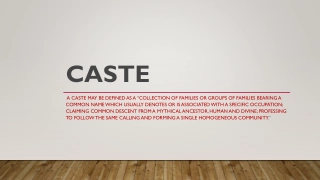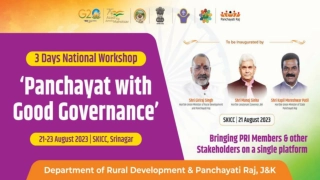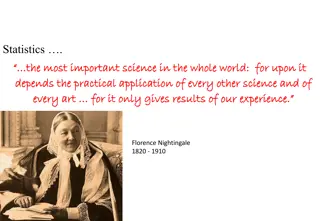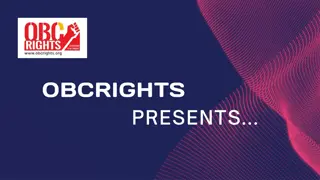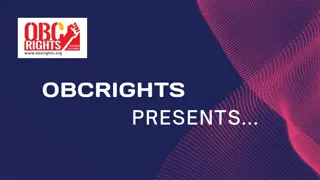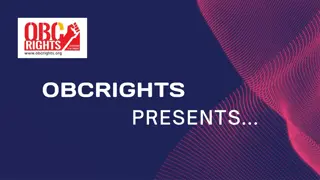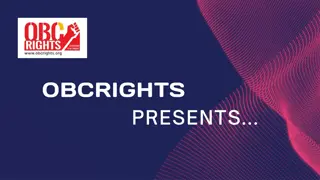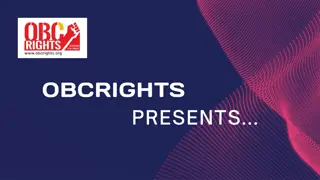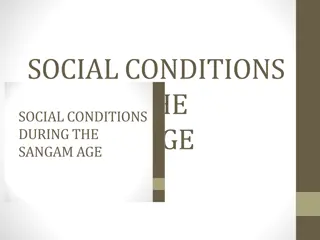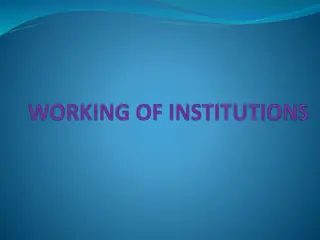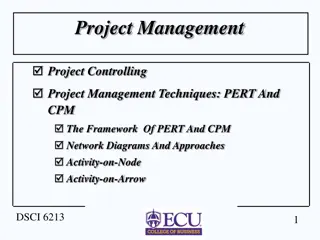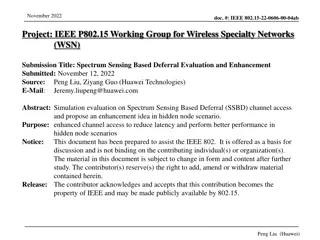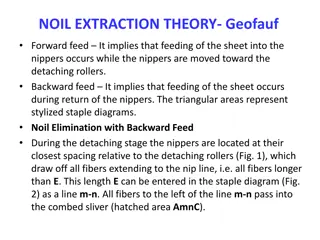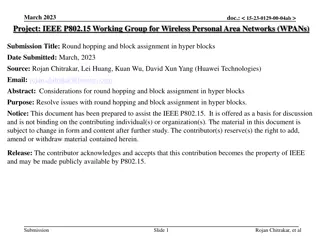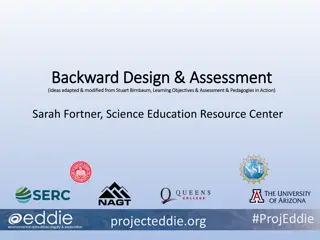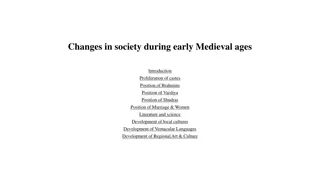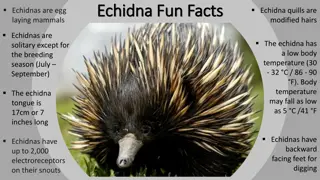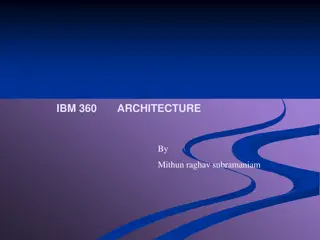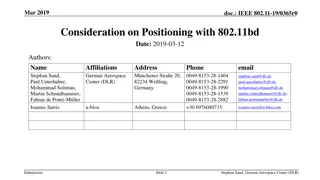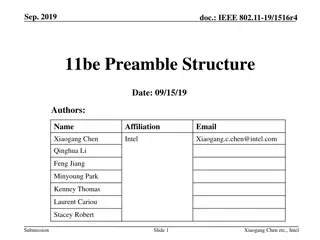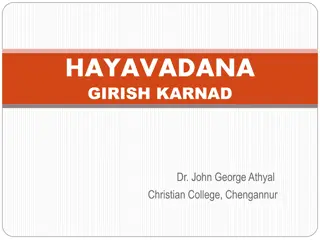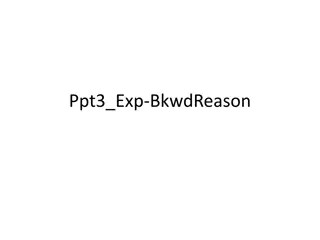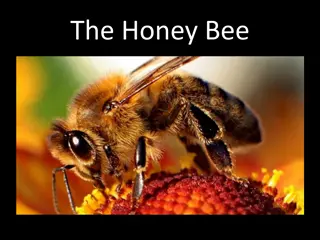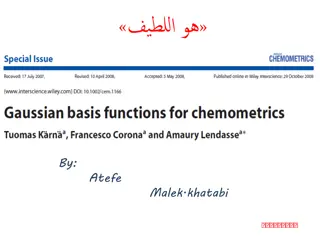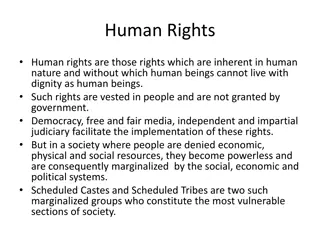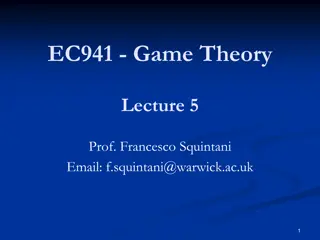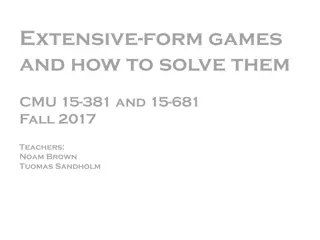National Food Processing Policy and Its Importance
National Food Processing Policy aims to address the significant wastage in food production through value addition and efficient processing. The policy highlights the reasons for food processing, including reducing losses in the supply chain and enhancing quality. It emphasizes creating an enabling e
1 views • 19 slides
Overview of Caste System in India
The caste system in India is a social structure defined by hereditary groups, each with specific occupations, rules, and traditions. Membership is based on birth, leading to a rigid hierarchy and limited mobility between castes. Endogamy, occupation, commensality, and purity are key features that sh
0 views • 17 slides
A Primer on Planetary Protection for Thermal Engineers
Delve into the realm of planetary protection with this comprehensive primer tailored for thermal engineers by Betsy Pugel, PhD. Explore the intersection of thermal and planetary protection, flight project practicalities, and the crucial components of forward and backward contamination. Gain insights
1 views • 48 slides
Aspirational Panchayat Development Programme (APDP) in Jammu & Kashmir
The Aspirational Panchayat Development Programme (APDP) in Jammu & Kashmir aims to uplift the most backward Panchayats through localized interventions and additional financial support to bridge developmental gaps. Implemented under the Planning, Development, and Monitoring Department, this program i
0 views • 59 slides
Understanding Logistic Regression Model Selection in Statistics
Statistics, as Florence Nightingale famously said, is the most important science in the world. In this chapter on logistic regression, we delve into model selection, interpretation of parameters, and methods such as forward selection, backward elimination, and stepwise selection. Guidelines for sele
4 views • 33 slides
How to apply for a Community Certificate in Tamil Nadu
A community certificate is a document serving as proof that an individual belongs to a specific category or caste. The main reserved categories in the country are Scheduled Caste (SC), Scheduled Tribes (ST), and Other Backward Classes (OBC). This certificate can be applied in the E-Sevai portal.\nTo
3 views • 5 slides
DNC cast list popuplation in as per Ambasankar Commission .
Denotified Communities (DNC) refer to social and educationally Backward groups officially recognized and labelled as such by the Government under the Tamilnadu Backward community.DNC population Count as per the Ambasankar Commission report:Note: The Following are the Communities that are in the Cent
4 views • 5 slides
BC Caste population as per Ambasankar Commission in India
In India, the term \u201cBackward Classes\u201c(BC) refers to socially and educationally Backward groups. In India, they come to OBC at the National level.\nBC population Count as per Ambasankar Commission:\nNote: The Following are the Communities that are in the Central Government list of \u201cOBC
6 views • 5 slides
MBC Caste population as per Ambasankar Commission in India.
MBC in the Indian context typically refers to \u201cMost Backward Classes.\u201d This is a category used in some Indian states to identify communities that are considered socially and educationally Backward.\nMBC population Count as per Ambasankar Commission\nNote: The Following are the Communities
3 views • 5 slides
How to apply for a Community Certificate in Tamil Nadu
A community certificate is a document serving as proof that an individual belongs to a specific category or caste. The main reserved categories in the country are Scheduled Caste (SC), Scheduled Tribes (ST), and Other Backward Classes (OBC). This certificate can be applied in the E-Sevai portal.\nDo
6 views • 5 slides
How to get Other Backward Classes certificate in Tamil Nadu
Other Backward Classes certificate: It is a Government of India Classified of Indian Nationals. In the Tamil Nadu state Government, the backward-class people have been classified as BCs and MBCs. In the central government, there is only one classification called OBCs. To get an OBC certificate. the
4 views • 5 slides
Evolution of IBM System/360 Architecture and Instruction Set Architectures
The IBM System/360 (S/360) mainframe computer system family, introduced in 1964, revolutionized computing by offering forward and backward compatibility, a unified instruction set architecture (ISA), and a balance between scientific and business efficiency. The critical elements of this architecture
0 views • 18 slides
Challenges and Requirements for Bandwidth Indication in IEEE 802.11
The document discusses challenges and requirements related to bandwidth indication in RTS/CTS frames with PPDU in 320 MHz, focusing on scenarios where bandwidth signaling may lead to misinterpretation by stations. It highlights the need for dynamic bandwidth and preamble puncturing information in RT
3 views • 21 slides
Social Conditions in the Sangam Age
The Sangam Age in Tamil Nadu saw a diverse society divided into regions based on landscape, with distinct occupations and deities. People in the Kurinji region were hunters, Mullai region herded animals, Marudham region focused on agriculture, Neydal region engaged in fishing, and Palai region strug
0 views • 12 slides
Controversy Surrounding the Mandal Commission in India
The Mandal Commission in India recommended job reservations for socially and educationally backward classes, sparking heated debates and protests. Despite support for addressing inequality, opposition arose over concerns of unfairness and impact on national unity. The Supreme Court upheld the reserv
0 views • 36 slides
Project Management Techniques: PERT and CPM Overview
Explore the fundamentals of Project Management Techniques, focusing on PERT and CPM. Understand Network Diagrams, Forward and Backward Pass, Critical Path, Project Scheduling, and more. Learn about Gantt Charts, Six Steps of PERT & CPM, and their historical development in the 1950s. Gain insights in
7 views • 14 slides
Spectrum Sensing-Based Deferral Enhancement for Wireless Networks
Simulation evaluation and enhancement proposal for Spectrum Sensing-Based Deferral (SSBD) channel access to improve latency and performance in hidden node scenarios. The proposed solution includes interference mitigation, coexistence improvements, backward compatibility, reduced air-time, improved l
0 views • 11 slides
Distribution Feeder Modeling and Analysis Overview
This document delves into the modeling, optimization, and simulation of power distribution systems, specifically focusing on Distribution Feeder Modeling and Analysis. It covers the components of a typical distribution feeder, series components, Wye-Connected Voltage Regulator modeling, and equation
0 views • 14 slides
Noil Extraction Theory: Geofauf Forward and Backward Feed Methods
Noil extraction theory involves Geofauf forward and backward feed methods for processing fibers in textile manufacturing. Forward feed involves feeding the sheet into the nippers while moving towards the detaching rollers, while backward feed feeds the sheet during the nippers' return. The process i
0 views • 6 slides
Spectrum Sensing for Enhanced Channel Access in Wireless Networks
This document presents a proposal for Spectrum Sensing Based Deferral (SSBD) to improve channel access in wireless networks. SSBD incorporates spectrum sensing with transmission deferral in a time-bound manner to enhance performance, reliability, and latency control. The proposed solution safeguards
1 views • 11 slides
Resolution of Round Hopping and Block Assignment in Hyper Blocks
Considerations for resolving issues related to round hopping and block assignment within hyper blocks for the IEEE P802.15 Working Group. The document discusses safeguards, interference mitigation techniques, coexistence improvements, backward compatibility, improved link budget, additional channels
1 views • 9 slides
Effective Course Design through Backward Assessment for Lasting Learning
Explore the significance of backward design and assessment in creating meaningful learning experiences. Discover key findings in student learning and strategies for developing enduring understandings. Consider what you want your students to remember five years later and the approaches to course desi
0 views • 19 slides
Social Changes in Early Medieval India: Caste Proliferation and Hierarchies
Social changes during the early Medieval ages in India were shaped by economic developments, leading to the proliferation of castes and shifts in the positions of Brahmins, Vaishyas, and Shudras. The Brahmins held the highest social position, while Vaishyas were marginalized. The period also saw the
0 views • 11 slides
Fascinating Facts About Echidnas - Quirks of Egg-Laying Mammals
Echidnas, intriguing egg-laying mammals, have unique traits like quill-covered bodies, backward-facing feet, and a long tongue for catching ants and termites. They are solitary except during breeding season and are known for their low body temperature. Learn more about these fascinating creatures!
0 views • 4 slides
Understanding Chemical Equilibrium in Reversible Reactions and Laws
Chemical equilibrium in reversible reactions involves the balance between forward and backward reactions, as governed by laws like the law of mass action and the law of chemical equilibrium. These laws help in understanding the rates of reactions, equilibrium constants, and the relationship between
1 views • 12 slides
Understanding Le Chatelier's Principle in Chemical Equilibrium
Le Chatelier's Principle states that when a system at equilibrium is disturbed by changes in concentration, temperature, or pressure, the equilibrium shifts to counteract the change. This principle can be applied to predict the direction of equilibrium when changes occur. Changes in concentration, p
0 views • 10 slides
IBM System/360 Architecture Evolution
The IBM System/360 (S/360) mainframe computer system family, introduced in 1964, revolutionized computing with its forward and backward compatibility, ISA family concept, and efficient integration of scientific and business applications. The critical elements, including compatibility design consider
0 views • 18 slides
Positioning Considerations in IEEE 802.11bd for Vehicular Communication
Discussing the implications of IEEE 802.11mc and 802.11az improvements on Fine Timing Measurement (FTM) protocol for positioning in high mobility environments, particularly focusing on V2X communications and vehicle speeds up to 250 km/h. The document addresses positioning modes, interoperability, c
0 views • 7 slides
IEEE 802.11-19-0202/r1 TGbd Agreed Terminology and Requirements
This document outlines the agreed terminology and requirements for the development of the next generation of IEEE 802.11p technology within IEEE 802.11bd Task Group. It covers aspects such as interoperability, co-existence, backward compatibility, and fairness between IEEE 802.11p and IEEE 802.11bd
0 views • 6 slides
IEEE 802.11-19/1516r4: 11be Preamble Structure Overview
The document discusses the design and structure of the 11be preamble in IEEE 802.11-19/1516r4. It emphasizes reusing existing functions from previous WiFi generations and focusing on features that enhance user experience. The preamble includes elements such as Pre-EHT preamble, EHT preamble, legacy
0 views • 13 slides
Analysis of "Hayavadana" by Girish Karnad: Themes and Cultural Implications
Girish Karnad's play "Hayavadana" explores themes of identity, quest for perfection, and existentialism through a mythical narrative intertwined with cultural implications. The play delves into the ambiguity of human life, the supremacy of the head, and the search for completeness, drawing inspirati
0 views • 11 slides
Backward Reasoning Approach in Exposition Questions
Utilize backward reasoning in exposition questions to underline subject matter, apply relevant physics knowledge, and deduce judgments. This strategy involves analyzing scenarios like heat transfer in making frothy milk to arrive at accurate conclusions. Through tackling questions step by step, you'
7 views • 9 slides
Ice Hockey Training Drills for Skaters
Engage in a variety of ice hockey training drills focusing on skills like crossovers, tight turns, backward skating, puck control, stopping, and battles. Stations incorporate different techniques such as weaving around cones, stopping at specific points, transitioning between forward and backward sk
0 views • 14 slides
Enhancing Defensive Skills and Situational Awareness in Hockey
Enhancing defensive skills and situational play in hockey is crucial for success. All team members can contribute to team defense by developing skills like skating, body checking, understanding the ice surface defensively, read and react abilities, and effective communication. Proper skating skills
3 views • 45 slides
Fascinating Facts About Honey Bees
Discover the incredible world of honey bees, including their three types or castes, body regions, unique features like compound and simple eyes, antennae, proboscis, and mandibles. Explore how their thorax enables flight with four wings, and learn about the speed and agility of these remarkable inse
0 views • 21 slides
Functional Approximation Using Gaussian Basis Functions for Dimensionality Reduction
This paper proposes a method for dimensionality reduction based on functional approximation using Gaussian basis functions. Nonlinear Gauss weights are utilized to train a least squares support vector machine (LS-SVM) model, with further variable selection using forward-backward methodology. The met
0 views • 23 slides
Understanding Scheduled Castes, Untouchability, and Backward Classes in India
The Scheduled Castes (SCs) and Scheduled Tribes (STs) in India are officially recognized groups, representing about 16.6% and 8.6% of the population respectively. They were historically known as Depressed Classes and have been given reservation status for political representation. The government has
0 views • 20 slides
Challenges in Protecting Rights of Marginalized Groups in India
Despite constitutional provisions and legal frameworks, marginalized groups such as Scheduled Castes and Scheduled Tribes in India continue to face exploitation, discrimination, and violations of their rights. Protective discrimination measures have been found insufficient in addressing the deep-roo
0 views • 15 slides
Extensive-Form Games and Backward Induction: Strategic Insights
Explore the application of extensive-form games in strategic decision-making, focusing on Subgame Perfection and Backward Induction. Understand the dynamics of entry games, such as the interplay between a potential entrant and a monopolist. Delve into the implications of commitment in game theory th
0 views • 44 slides
Understanding Extensive-Form Games and Backward Induction
Explore the concepts of extensive-form games, two-player zero-sum games, and backward induction in game theory. Discover how players strategize, maximize utility, and navigate decision trees to reach optimal outcomes. Dive into the fundamentals of game theory assumptions and the strategies used to s
0 views • 46 slides

